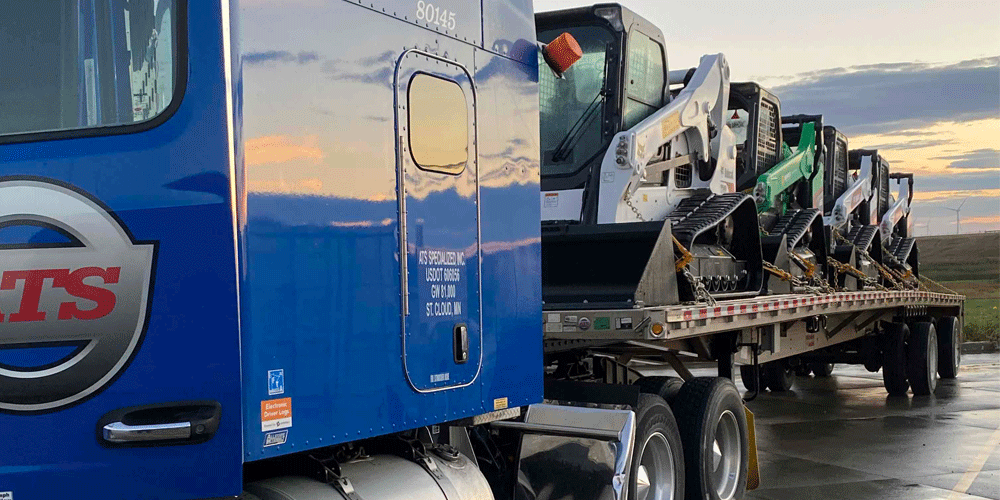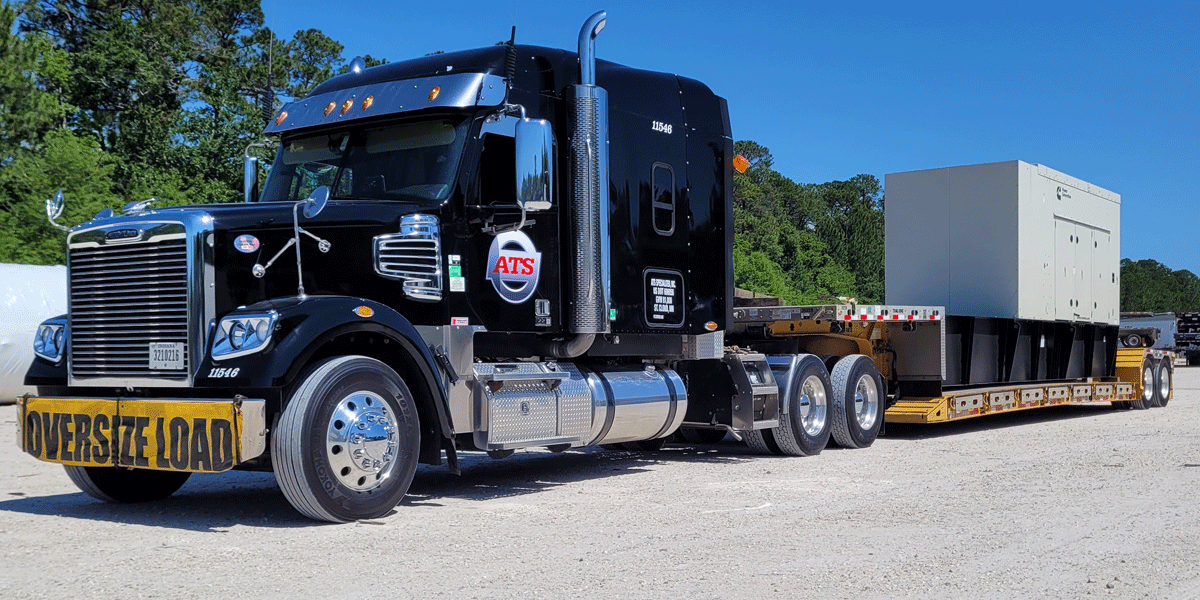Jason started with ATS in October 2010 as the prep shop foreman running the unmanned trucks department. He eventually moved into the service shop foreman position and then the trailer shop service leader role. He is currently the shop manager at ATS, a position he has held for just over four years.
When you go into a car dealership for a new vehicle, you want something nice and well-taken care of.
At a dealership, can you guarantee that the new-to-you vehicle went through a thorough inspection and everything on it was fixed that needed to be taken care of? Nope. That car that was 500 miles from needing new brakes didn’t get new brakes. That huge dent didn’t get buffed out.
But when you’re getting a truck that will become your home for the foreseeable future, you want that truck to have everything fixed so it runs optimally.
A lot of drivers are concerned about the status of their trucks, and rightfully so. You might not know what happens when a truck is dropped off and transferred from one driver to the next; you might not know how Anderson Trucking Service (ATS) maintains its trucks and preps them for a new driver.
As the shop manager at one of the ATS terminals, I oversee the process from start to finish. I’ll help you get a clear understanding of the process so you can feel confident about whatever truck you receive or choose to drive off the lot.
When you’re finished reviewing the article, you’ll feel confident about the condition of the truck you’re in.

What’s the Process for Prepping a Truck?
When a tractor arrives at the shop, whether it was being driven by a company driver or a lease contractor, it’ll go through a thorough inspection.
The process starts with a cleanout and then an inspection. Let’s go through the entire process together.
Cleanout
Before the truck goes through its inspection, we first clean it out. That means removing any personal belongings and cleaning out any trash.
Personal belongings will be set aside in a box and sealed for 90 days before they’re tossed.
118-Point Inspection
A dedicated inspector gets the truck and starts in on a 118-point inspection. The inspection sheet is four pages long and the inspection takes around three hours to complete.
During the 118-point inspection, the dedicated inspector is simply taking notes of everything they see. They have to write up every known defect. They don’t make the decision about what does and doesn’t need to be fixed. They take a very subjective view of what is and isn’t going on with the tractor.
The inspection includes a few main categories:
- On the way into the shop
- In-cab
- Sleeper area
- Outside walkaround
- Engine compartment
- Under the vehicle
- Electrical system check
Within each of these categories, there are specific items we need to check.
On the Way Into the Shop
The inspector checks the brakes to make sure they hold and don’t pull. They listen for abnormal engine noises and check steering operation and transmission operation.
In-Cab
This is one of the most thorough areas we have to check. The inspector checks everything from how the gauges work while the engine is running to the horn, seat belts, seat cushions, sun visors, windshield and air conditioning.
Basically, anything within the inside of the tractor should be checked to determine if it’s in good working order or if it needs to be replaced. We even look to make sure the cup holders are in good condition.
If a driver has installed something in the interior or drilled holes, this is where we’ll see it.
The inspectors even pull up the flooring and vinyl to make sure there isn’t any pet damage.

Sleeper Area
Similar to how we check everything inside the cab, we also go into the sleeper area. We check the condition of climate controls, lighting, speakers, windows, cabinets, curtains and more.
During this time, we also check to see if the APU and bunk heater controls and systems are functioning properly.
Outside Walk Around
During the outside walk-around, the dedicated inspector will check out the condition of the outside of the tractor and make sure the necessary equipment is in the tractor. For instance, they’ll check the triangle kit and the spare fuse kit.
Then they’ll check the condition and operation of the lighting, mud flaps, cab suspension, fifth wheel, fuel tanks and more.
They’ll check the hood, bumper and body for loose, broken or protruding items. They’ll also look at the mirrors, grill, emblems, fenders and headache rack (if the tractor has one). This is where they’ll spot any potential accident damage that occurred on the vehicle. If there weren’t any claims but there is damage, they’ll take photos and submit it.
At this point, they’ll also check and record tire tread depth and inflation.
Engine Compartment
During this stage of the inspection, the dedicated inspector will check out the engine to determine if it’s in good condition or if it may need some attention.
They’ll check for various engine oil leaks or fuel leaks. They'll also check the following:
- Fuel lines
- Air filter
- Radiator
- Coolant
- Steering components
- Block and fuel heater
- Air conditioner
- Alternator
- Belts, tensioners and idlers
- Exhaust system
They’ll also run the engine to determine if there are any weird noises or if they can hear any leaks.
Under Vehicle
When the inspector looks under the vehicle, they’ll look for any leaks (primarily exhaust, coolant, oil or transmission fluid leaks). They’ll look for the condition of parts like the brakes, engine mounts, clutch components drive lines, rear suspension, shocks and more. They’ll note if everything is in good working condition, if it’s the correct length/size and whether or not anything is loose.
How Do We Decide What to Fix?
After the dedicated inspector goes through the full inspection and writes down detailed notes about what they noticed, it goes to a technician.
If needed, a second-level inspection will be completed by an internal inspector.
They’ll go through the history of the unit. Are there any claims on the unit? What is the work history of the unit? Were there a lot of breakdowns? What were they? Are there any common themes with the breakdowns? Why was the unit turned in?
If we see a pattern of breakdowns, we’ll dig deeper. The technician will type up everything they see, including the whole list of items that need to be repaired and the full scope of work.
After a technician thoroughly investigates the tractor, its history and current inspection status, the service leader reviews all the tasks and determines what does and doesn’t need to be repaired based on Department of Transportation (DOT) and ATS guidelines. ATS ends up fixing 90 percent of what needs to be fixed. The things that might not get fixed are cosmetic issues that aren’t required.
But as for major issues, we take into account the truck’s history and what’s historically gone on with it breakdown-wise. We’d rather fix it now rather than later on. We don’t want the driver to have to be in the shop later.
We do the best we can with what we know. We want to make sure you’re getting a used truck that’s functioning properly inside and out.
After this process, we decide who needs to complete the repairs. Some repairs go to the dealership, some go to an external detailer and some go to our shop in-house. If there’s damage on the outside of the vehicle, it will need to go to a body shop. For instance, if there is a recall on a part, it’ll need to go back to the dealership.
We have specific people on the team that are certified to fix certain parts of the truck. Because they specialize in what they do, you can count on the best person performing the work.
The truck will be cleaned thoroughly. If needed, we’ll gut the inside of the truck to get rid of weird smells and damage done by pets. If the previous driver was a smoker, an ozone generator will be used to deodorize and purify the air. A new mattress will also be placed in the truck.

A Final Quality Inspection
Before the truck goes on the lot, there’s a quality inspection. It’s never completed by the person who did the initial 118-point inspection. There’s a new set of eyes on the truck to make sure we didn’t miss anything.
Truck Selection at ATS
ATS is well-known for having quality trucks. We are thorough and take care of the required repairs, which gives us a good reputation when we sell our trucks.
When you get a truck — whether you’re leasing or you’re a company driver — you can bet that we gutted that truck, fixed everything that needed fixing and confidently put it into our fleet to be chosen by you.
We look at the issues holistically. Do we fix the whole thing?
That being said, ATS and all carriers are still dealing with the truck and parts shortages. We have an older fleet now than we typically do. Preventative maintenance is more important than ever, but it’s also important to recognize that the shop can’t control things like internal engine failures because of factory defects.
Ready to learn more about our truck selection process? Learn more about how you’ll choose your truck when you arrive at orientation.


